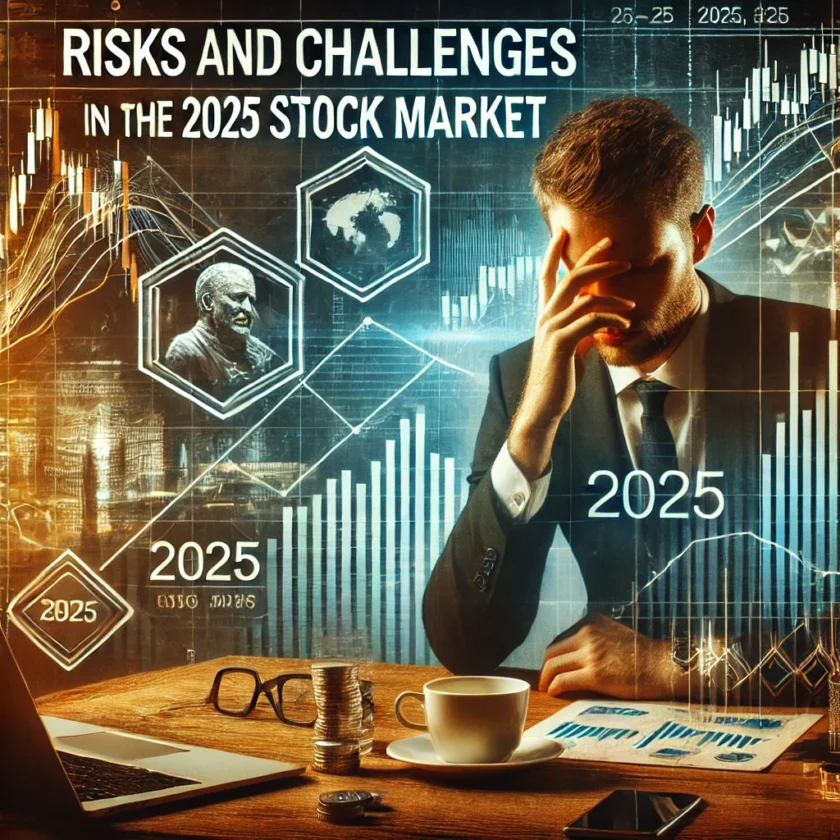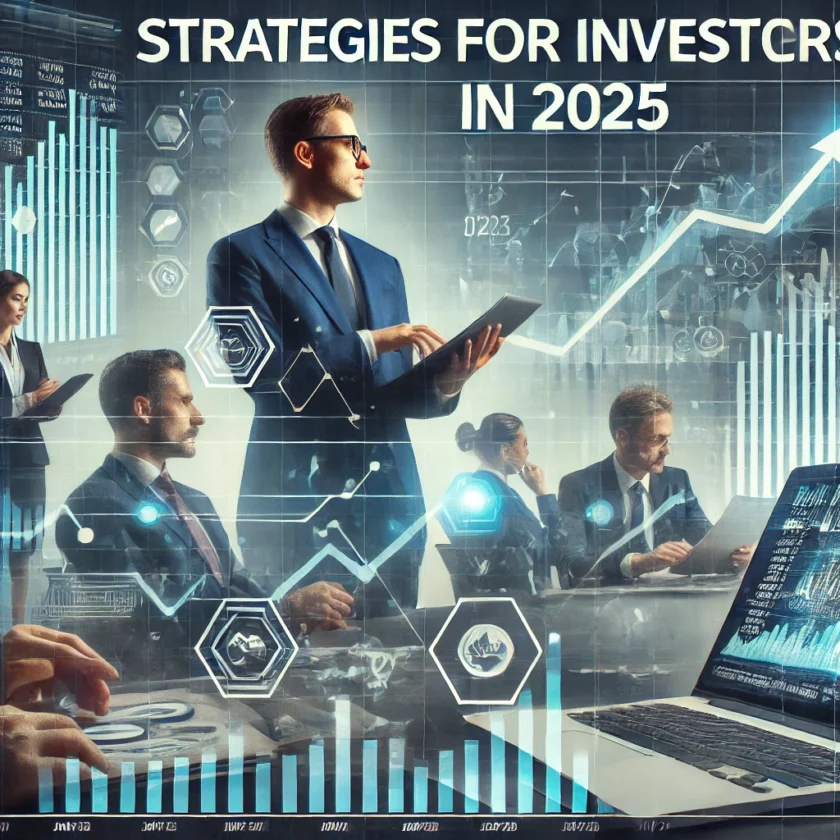
The stock market is a constantly evolving entity, shaped by economic cycles, geopolitical shifts, technological advancements, and investor sentiment. As we move into 2025, investors are closely analyzing trends that could impact their portfolios, seeking strategies to navigate a rapidly changing financial landscape.
2024 was a year of recovery and recalibration, following economic uncertainties, fluctuating interest rates, and market volatility. Now, as we step into 2025, the financial world is buzzing with discussions about potential bullish trends, interest rate policies, emerging sectors, and AI-driven trading innovations. But what lies ahead for the stock market? What are the key trends and predictions investors need to consider?
This detailed analysis of the 2025 stock market outlook will provide insights into market trends, investment opportunities, potential risks, and strategies for investors looking to optimize their portfolios. Whether you are a retail investor, institutional trader, or financial analyst, understanding these trends will be crucial in making informed investment decisions.
1. The Macroeconomic Landscape Shaping the 2025 Stock Market

1.1 Interest Rates and Central Bank Policies
The monetary policies set by central banks, particularly the U.S. Federal Reserve, the European Central Bank, and the Bank of Japan, play a significant role in shaping stock market trends. The key questions for 2025 include:
- Will the Federal Reserve continue to raise interest rates, or will they shift toward easing monetary policy?
- How will inflation trends influence stock performance across different sectors?
- Will global central banks adopt a synchronized policy approach, or will there be divergence in their strategies?
Higher interest rates tend to negatively impact growth stocks, particularly in the technology sector, while value stocks and dividend-paying companies often perform better in such an environment.
1.2 Inflation and Its Impact on Stock Performance
Inflation remained a central concern throughout 2024, impacting consumer purchasing power, corporate earnings, and investor sentiment. Heading into 2025, analysts are closely monitoring whether inflation levels will stabilize or continue fluctuating.
Key factors influencing inflation include:
- Energy Prices – Volatility in oil and gas prices could drive inflation higher or stabilize it.
- Supply Chain Resilience – Post-pandemic disruptions have mostly been resolved, but geopolitical risks remain.
- Consumer Spending – As disposable income changes, companies in retail and discretionary sectors could see fluctuations in stock performance.
Understanding inflation trends will be essential for investors looking to balance their portfolios effectively.
2. Key Stock Market Trends for 2025

2.1 The Rise of AI and Automated Trading
Artificial intelligence (AI) is revolutionizing the financial sector, and in 2025, its impact on stock trading will be more prominent than ever. Hedge funds, retail investors, and institutional traders are increasingly using AI-powered tools to analyze market trends, optimize investment strategies, and execute trades.
How AI is Transforming Stock Market Trading:
- Predictive Analytics – AI-driven forecasting models provide traders with advanced insights into market movements.
- Algorithmic Trading – High-frequency trading powered by AI is leading to increased market efficiency and liquidity.
- Risk Management – AI tools help investors detect anomalies and mitigate potential losses before they escalate.
With AI playing a growing role, investors should consider integrating technology-driven strategies into their trading approaches.
2.2 Emerging Sectors and Growth Opportunities
2025 is expected to bring significant growth to several key sectors, particularly in technology, healthcare, and renewable energy. Investors should watch for the following trends:
- Semiconductor Industry Boom: AI-driven computing and expanding 5G infrastructure are fueling demand for advanced semiconductors.
- Renewable Energy Revolution: Companies focused on solar, wind, and green hydrogen technology are poised for expansion.
- Biotech and Healthcare Innovation: The biotechnology sector is witnessing groundbreaking advancements in gene therapy, personalized medicine, and AI-driven diagnostics.
2.3 ESG Investing and Sustainability Trends
Environmental, Social, and Governance (ESG) investing continues to gain traction, with investors increasingly prioritizing companies that align with sustainable business practices. Regulatory frameworks supporting ESG disclosures and investor demand for ethical investments are expected to shape stock market trends.
Companies with strong ESG performance are attracting institutional investments, making sustainability-focused funds a major trend in 2025.
3. Risks and Challenges in the 2025 Stock Market

3.1 Geopolitical Risks and Market Volatility
Geopolitical instability remains a key concern for investors. Trade tensions, global conflicts, and economic sanctions can influence stock market performance across different regions. Key areas of concern include:
- U.S.-China Relations – Potential tariffs and trade barriers affecting technology and manufacturing sectors.
- European Energy Security – Impact of energy policies on European markets and corporate profits.
- Middle East and Oil Prices – Fluctuations in oil supply affecting energy stocks and inflation rates.
3.2 Cryptocurrency Influence on Traditional Stock Markets
The increasing integration of cryptocurrencies into the financial system is another factor shaping stock market trends. Bitcoin ETFs, regulatory policies, and institutional adoption of digital assets are influencing investment strategies.
Potential scenarios:
- Bitcoin ETFs gaining mainstream acceptance could drive capital inflows into tech-related stocks.
- Regulatory crackdowns on crypto markets could lead to volatility in fintech and blockchain-related equities.
4. Strategies for Investors in 2025

4.1 Diversification Strategies
Given the uncertainty in global markets, diversification remains a fundamental investment strategy. Investors should consider:
- Balancing between growth and value stocks to mitigate risks.
- Exploring international markets for diversification opportunities.
- Allocating funds to alternative assets like commodities and real estate for hedging against inflation.
4.2 Long-Term vs. Short-Term Investing
Investors should carefully evaluate their risk tolerance and investment goals when deciding between long-term and short-term strategies.
- Long-term investors should focus on solid companies with strong fundamentals.
- Short-term traders can leverage AI-powered tools to capitalize on volatility and short-term price movements.
5. The Future of the Stock Market Beyond 2025

5.1 Predictions for Market Growth and Technological Innovations
The evolution of financial technology and continued globalization are expected to drive stock market growth beyond 2025. AI, blockchain, and automation will play a greater role in stock analysis and trading efficiency.
5.2 How Investors Can Stay Ahead
To remain successful, investors should:
- Stay informed on economic indicators and policy changes.
- Leverage AI-powered investment tools.
- Diversify portfolios across multiple asset classes.
- Remain adaptable to market trends and innovations.
6. The Role of Government Policies in Market Stability

6.1 Fiscal Policies and Their Impact on the Market
Government spending, taxation, and stimulus measures significantly influence stock market performance. Tax incentives for businesses, infrastructure development, and economic relief packages can determine sector growth.
6.2 Regulatory Changes and Compliance Requirements
Stricter financial regulations may impact industries such as banking, technology, and energy. Investors should keep an eye on:
- SEC policy updates
- Changes in corporate tax structures
- Antitrust regulations for tech giants
7. The Global Market and International Investments
7.1 Emerging Markets and Their Potential Growth
Countries with rapid economic expansion, such as India, Brazil, and Southeast Asian nations, present promising investment opportunities.
7.2 Risks in International Investments
Investors considering global stocks must assess:
- Currency exchange rate fluctuations
- Political instability in emerging economies
- Trade agreements and tariff policies
Conclusion
The stock market in 2025 presents both risks and opportunities. Investors who embrace technological advancements, stay informed about macroeconomic shifts, and develop robust diversification strategies will be well-positioned for success. The future belongs to those who adapt, innovate, and remain resilient in the face of change.




